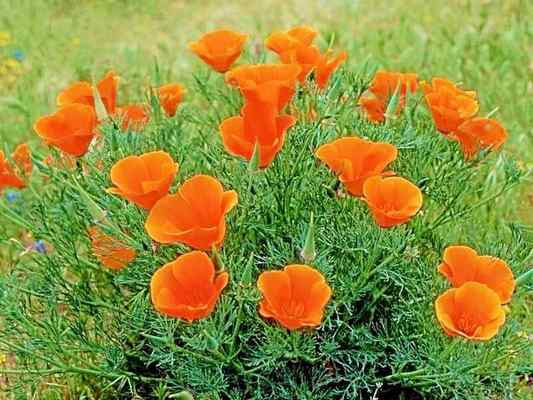
Many people love the brilliant golden blossoms and delicate frilly, fernlike blue-green foliage of the California poppy. The California poppy or Eschscholzia californica — a member of the Papaveraceae or poppy family — is native to California, Baja California and Oregon. It now ranges from Washington to Baja California and throughout California, Nevada, Arizona and New Mexico.
California poppies (Eschsholtzia californica) are native to the Western United States, including California. The poppies have many uses, including harvesting California poppy seeds to plant or taking cut flowers to brighten up your home. The flowers grow in U.S. Department of Agriculture plant hardiness zones 6 to 10 and generally bloom from February through September.
On Dec. 12, 1890, the California State Floral Society voted to select a state flower. The three nominees were Eschscholzia californica, the California poppy; Romneya coulteri, the matilija poppy; and Calochortus, the mariposa lily. After almost 13 years, the California Legislature adopted Eschscholzia californica as the official California state flower on March 2, 1903. Seventy years later, in 1973, the law was amended to designate April 6 of each year as California Poppy Day.
A favorite as an annual springtime ornamental planting, Eschscholzia californica can be a perennial in mild areas or it can be an annual in cooler conditions. It is easy to grow. Just scatter seeds in the fall where you would like them to bloom in the spring. The California poppy loves full sun but appreciates a little afternoon shade. This rugged plant is extremely drought tolerant and rarely needs fertilizing.
Eschscholzia californica was first described by Adelbert von Chamisso, the naturalist on the Russian ship Rurik, captained by Otto von Kotzebue on its scientific expedition to California and the greater Pacific in the mid-1810s. Chamisso named the genus in honor of Johann Friedrich Eschscholtz, his close friend and the expedition’s physician.
Follow us in Social Media